Context: After 3 years of India’s innovative education policy “National Education Policy 2020”, an assessment is desired.
Continue Reading: National Education Policy NEP 2020, Comprehensive Guide
Source: PIB
Context: Rajya Sabha passed the bill to increase the age limit of the President and members of the GST Appellate Tribunals.
Source: Indian Express
Context: The India cyber threat report 2023 is released by the Data Security Council of India (DSCI) and Quick heal.
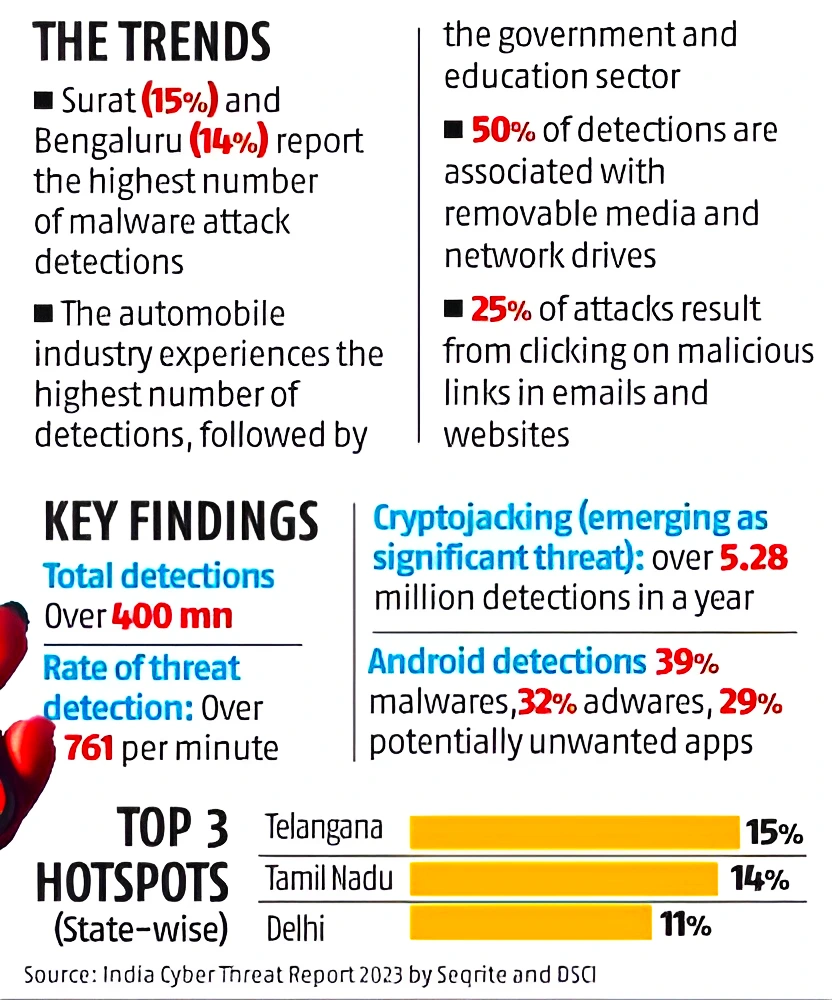
Must Read: NCRB Data On Cyber Crime In India
About Data Security Council of India (DSCI)
|
|---|
News source: Business Standard
Context: The European Union and Member states have reached an agreement to reform the bloc’s migration policy through ‘New Pact on Migration and Asylum’.
About European Union (EU)
|
|---|
Must Read: International Migration Outlook 2023
News Source: Euronews
Context: Reduced human activities in Bihar’s Valmiki Tiger Reserve (VTR) has resulted in an increase in Tiger population.
The National Tiger Conservation Authority (NTCA)
Powers and Functions:
|
|---|
Eco Sensitive Zones
|
|---|
Also Read: 50th Anniversary Of Project Tiger
News source: Down to Earth
Context: Recently, a development plan for Goddess Sita’s birthplace at Punaura Dham in Sitamarhi was launched by the Bihar Government.
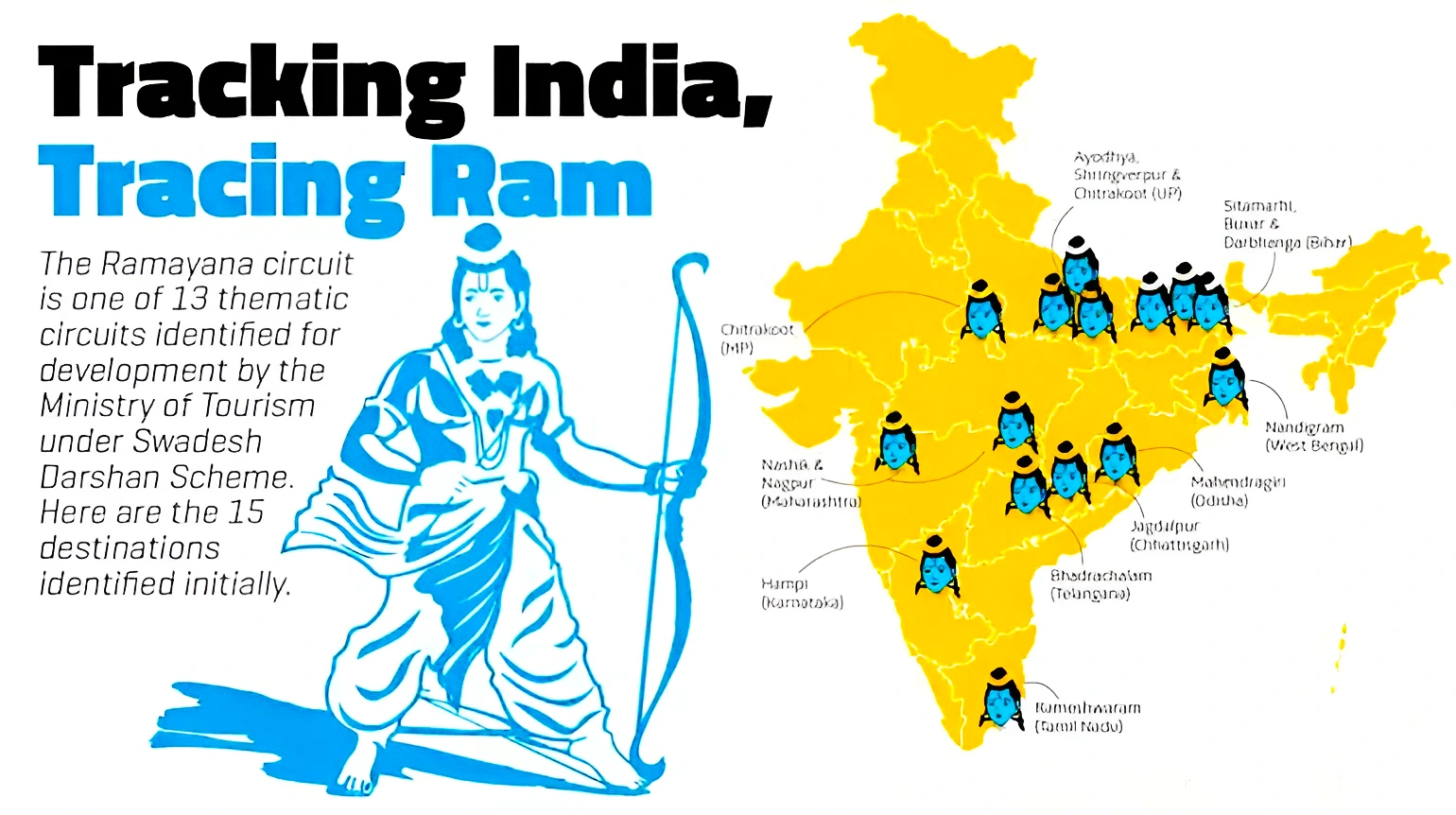
Swadesh Darshan Scheme
|
|---|
News Source: Indian express
Context: The Ministry of Railways directed the National Academy of Indian Railways (NAIR), Vadodara, to transfer all its assets to Gati Shakti Vishwavidyalaya (GSV).
Gati Shakti Vishwavidyalaya (GSV) Vadodara
|
|---|
News Source: The Hindu
Context: Recently, the Supreme Court in Colorado ruled that the former US President, Donald Trump, is “disqualified from holding the office of President under Section Three of the 14th Amendment to the US Constitution”.
News Source: The Indian Express
Context: Sahitya Akademi has recently announced its annual Sahitya Akademi Award 2023 in 24 languages.
| Award Winners | Literary Work |
| Rajasekaran (Devibharathi) | Neervazhi Padooum. |
| T. Patanjali Sastry | Rameshwaram Kaakulu Marikonni Kathalu |
| E.V. Ramakrishnan | Malayala Novelinte Deshakalangal. |
| Lakshmisha Tolpadi | Mahabharatha Anusandhanada Bharathayatre |
| Swapnamay Chakrabarti | Jaler Upar Pani. |
| Neelum Saran Gour | Requiem in Raga Janaki. |
| Sanjeev | Mujhe Pahachaano. |
|
Poetry Collections |
News Source: TH
Context: This article is based on the news “141 Opposition MPs suspended so far: Are they allowed to enter Parliament? Check list of restrictions” which was published in the Live Mint. The recent suspension of MPs, especially when crucial bills were introduced and passed with limited discussion, raises concerns about legislative decline.
| Relevancy for Mains: Implications of the recent suspension of Members of Parliament (MPs) on democracy, and the role of the Opposition in the parliamentary process. |
|---|
To read more on the Suspension of MPs click here
Context: This article is based on the news “Parliamentary panel recommends stricter action to end child labour in India” which was published in the Economic Times. The Parliamentary Standing Committee on Labour has recently tabled a detailed report titled ‘National Policy on Child Labour – An Assessment’ in Parliament on the implementation of the Centre’s policy on child labour in India.
| Relevancy for Prelims: CENSUS & Survey DATA on Child Labour in India, Parliamentary Standing Committee, Child Labour (Prohibition and Regulation) Act, (CLPRA) 1986, Child Labour (Prohibition and Regulation) Act 1986, and National Policy on Child Labour.
Relevancy for Mains: Parliamentary Committee Recommendations to End Child Labour In India. |
|---|
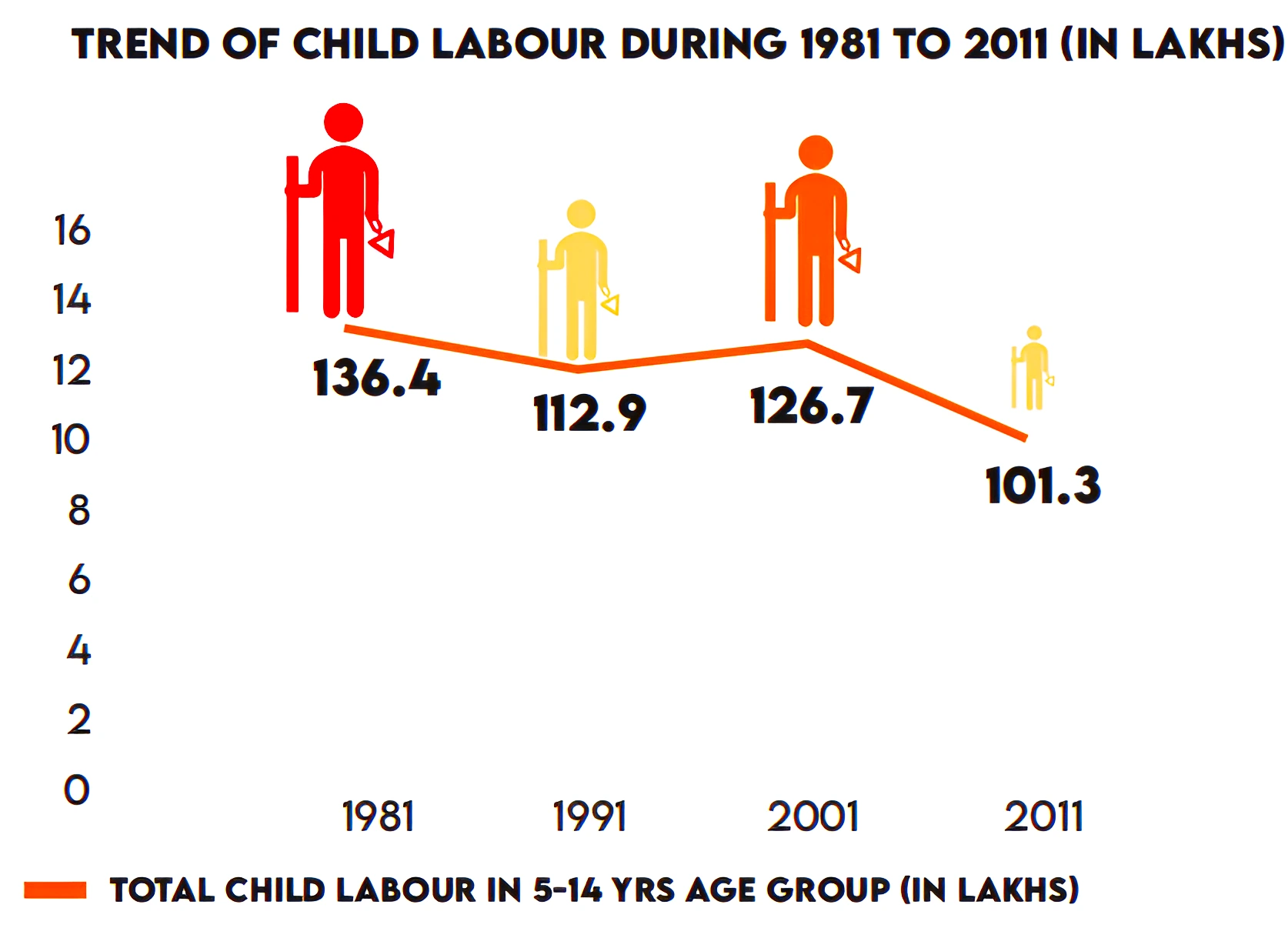
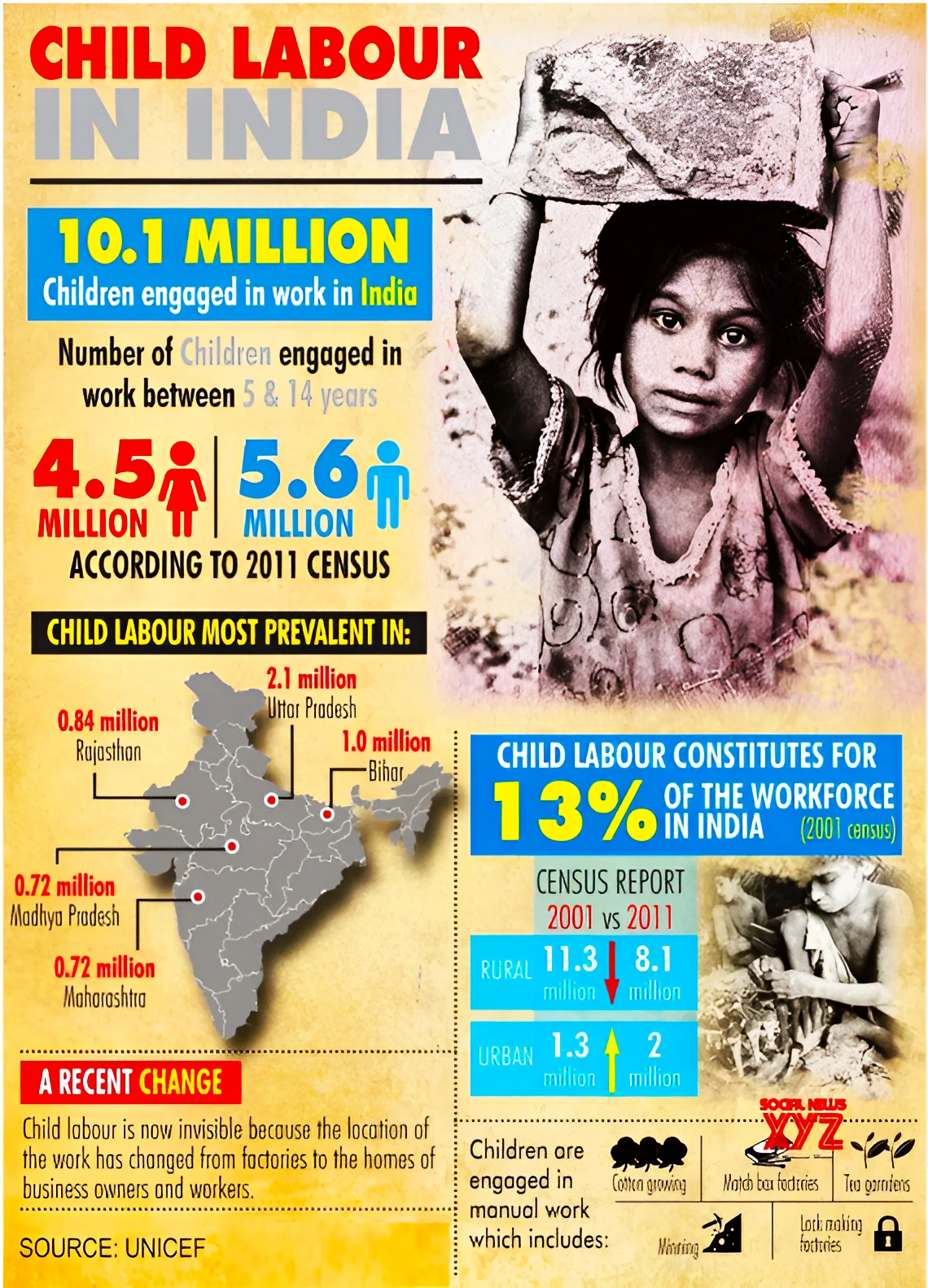 For complete elimination of child labour in India by 2025, the decline in number of child labour has to increase from 1.9 lakh per annum to 12.4 lakh per annum.
For complete elimination of child labour in India by 2025, the decline in number of child labour has to increase from 1.9 lakh per annum to 12.4 lakh per annum. Must Read: Periodic Labour Force Survey (PLFS) Annual Report 2022
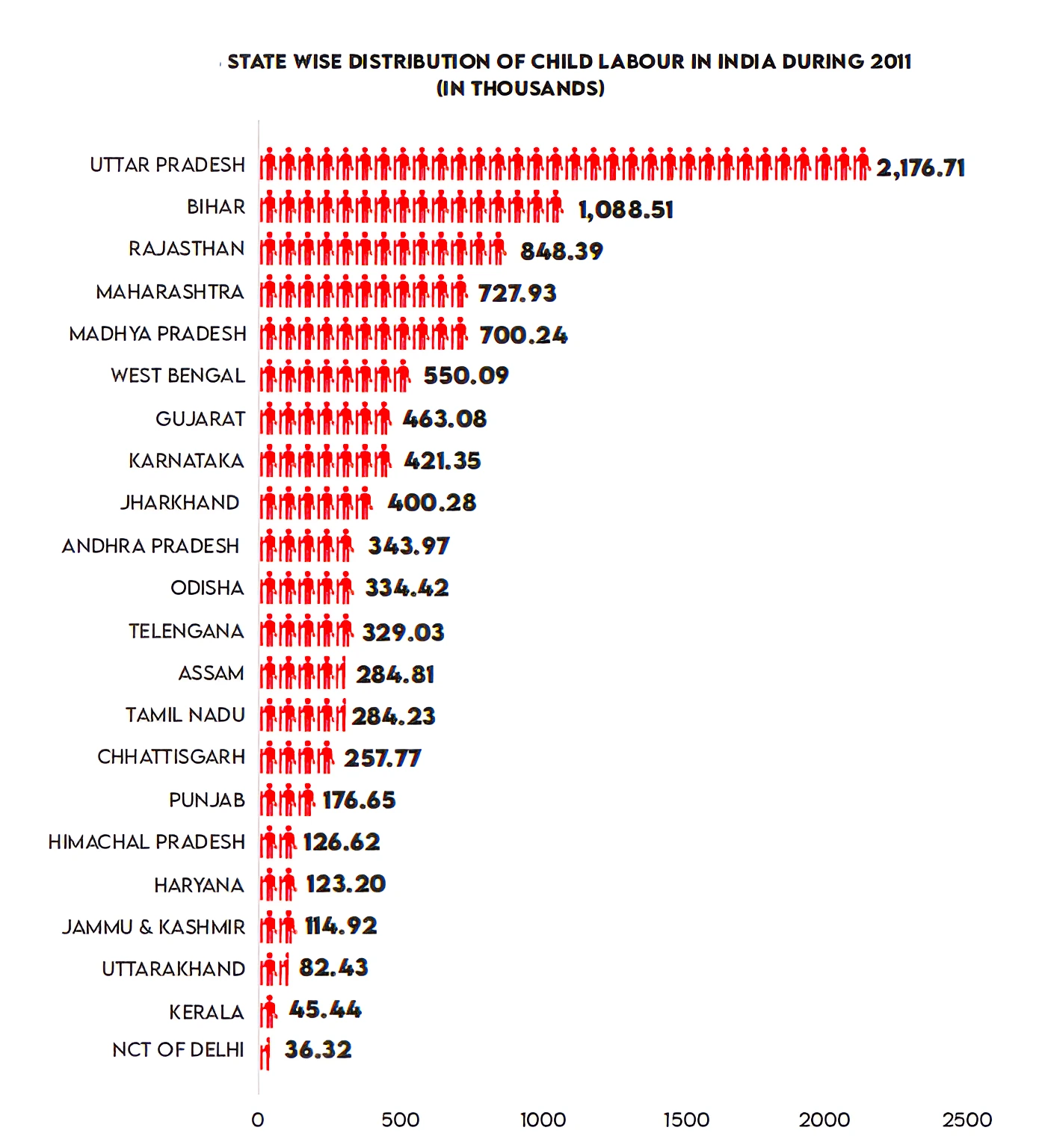 Government has taken measures to keep children out of factories, and put them in schools hoping it will empower children with skills that can help boost their incomes in the future. But, quite often, the standard of public schooling is abysmal as they fail in imparting useful skills.
Government has taken measures to keep children out of factories, and put them in schools hoping it will empower children with skills that can help boost their incomes in the future. But, quite often, the standard of public schooling is abysmal as they fail in imparting useful skills.Role of panchayat in mitigating child labour
|
|---|
Addressing child labour in India requires a multifaceted approach, including strict enforcement of existing laws, comprehensive awareness programs, poverty alleviation measures, and effective rehabilitation strategies, emphasizing the need for coordinated efforts across government agencies and civil society to ensure the well-being and development of every child.
| Mains Question: Explain how forced labour and modern day slavery would increase inequality, unstable social justice and threaten democracy. (150 Words, 10 Marks) |
|---|
SC Verdict on Newsclick Shows Adherence to Due Pro...
Stay Invested: On Chabahar and India-Iran Relation...
Credit Rating Agencies, Impact on India’s De...
Catapulting Indian Biopharma Industry
Globalisation Under Threat, US Import Tariffs Have...
Global Report on Hypertension, Global Insights and...
<div class="new-fform">
</div>
